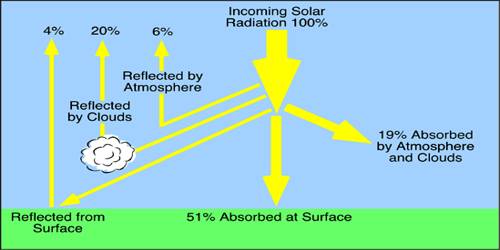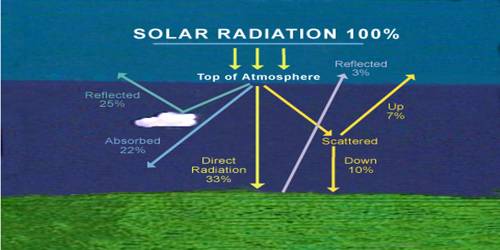Solar Radiation
The earth’s surface receives most of its energy in short wavelengths. The energy received by the earth is known as incoming solar radiation which in short is termed as Insolation. It is radiant energy emitted by the sun, particularly electromagnetic energy.
As the earth is a geoid resembling a sphere, the sun’s rays fall obliquely at the top of the atmosphere and the earth intercepts a very small portion of the sun’s energy. Solar radiation is all of the light and energy that comes from the sun, and there are many different forms. On an average, the earth receives 1.94 calories per sq. cm per minute at the top of its atmosphere.

The solar output received at the top of the atmosphere varies slightly in a year due to the variations in the distance between the earth and the sun. During its revolution around the sun, the earth is farthest from the sun (152 million km on 4th July). This position of the earth is called aphelion. On 3rd January, the earth is the nearest to the sun (147 million km). This position is called perihelion. Therefore, the annual Insolation received by the earth on 3rd January is slightly more than the amount received on 4th July. However, the effect of this variation in the solar output is masked by other factors like the distribution of land and sea and the atmospheric circulation. Hence, this variation in the solar output does not have the great effect on daily weather changes on the surface of the earth.














